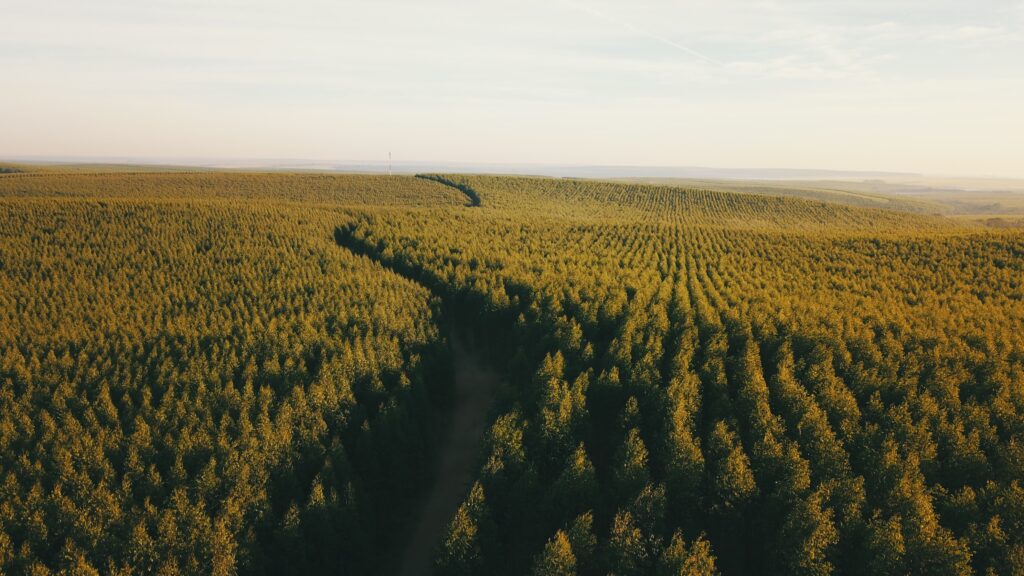The old idiom, can’t see the forest for the trees, provides a perfect analogy to explain why I don’t like the term timberland investment. The expression signifies a position entrenched in detail (the trees) to the point of not being able to see the larger picture (the forest). I believe that coining investments in forests as timberland is to focus on the elements of a forest that maximize timber revenues (the details), failing to see the larger picture of a forest ecosystem, for all its values, whether commercial or not (the larger picture).

Forest investments not Timberland investments
If you were to look back on my articles, you will notice that I don’t use the term timberland to refer to investments in the forest. I believe the term misrepresents what is at play when an investor invests its capital into forest land. Sure, timber is the primary commercial output of a forest investment, driving its financial returns, but there are so many non-timber forest values that are lost if we focus purely on maximizing timber. Not only that, but tunnel vision on timber maximization could threaten the very asset a timberland investor is trying to grow. In my view, the term forest investment is more appropriate – at least in the sustainable strategies I promote.
To be clear, I am a proponent of plantation forestry, managed forests and sustainable timber production. I believe that appropriate tree species should be selected to grow on suitable sites, where there is a clear market demand for their production. However, I do not support the practice of growing tens of thousands of hectares of a single-species monoculture configuration for timber, nor the disregard for other forest values in the establishment and execution of a management regime. This is less of a concern in developed geographies where timberland investments are subject to comprehensive forest legislation for the host of values I list below. Where it becomes a concern is in tropical developing geographies, where legislation may be non-existent, or is poorly enforced, leaving a forest manager to do what they will.
Non-timber forest values
Let’s consider some of the other values that exist in a forest that may be compromised when the focus is only on timber maximization. Again, this is more of an issue in the tropics where there is insufficient forest legislation or its enforcement may be lacking.
1. Biodiversity
Biodiversity is the ‘new carbon’ when it comes to investors’ sustainability interests. Investors are coming to realize its value but are still having a difficult time attaching a price tag to its preservation and enhancement. Finance for biodiversity and the Taskforce on nature-related financial disclosures (TNFD) are two platforms looking to improve this – to create a common language around biodiversity, metrics for how biodiversity is performing in various portfolios, and a lobby group among players in the financial industry to make commitments towards protecting it. There is a timely event, hosted by City & Financial Global on September 22, 2021, that aims to provide companies and financial institutions with the tools to address the key issues involved in nature-based financial disclosure and reporting.
As biodiversity gains more momentum in the investment space, I believe we will see fewer monoculture timberland investments, and more mosaic forest investments. Timberland investors should also view biodiversity preservation as a risk management tool. As the climate changes, even-aged monocultures have an increased risk of fire, drought, pests and disease – not to mention, tree growth might not perform as planned if the climate changes against the optimal conditions for the species planted. If you are interested to read more on this topic, I have written an entire article, on how biodiversity and commercial timber values can co-exist.
2. Soil & water integrity
Forests, in a way, are soil and water stewards. Various tree species and understory vegetation not only contribute to the biodiversity mentioned above, but they also serve as both an anchor for soil structure and a contributor to its nutrients and profile. Forest vegetation is also an important pump for water circulation in the water cycle. Both the vegetative canopy, through evapotranspiration, and root systems, through transferring water to various soil layers, can reduce run-off that can lead to flooding and soil erosion while also transferring water to various soil layers. This protects against land degradation and desertification, improving the overall productivity of a site. Timberland investments looking to maximize timber productivity run the risk of depleting both water and nutrients from the soils, which over the long-run, may compromise to forest’s ability to generate productive forests in any case.
3. Non-timber forest products
Non-timber forest products (NTFPs) include a host of goods that forests provide. These include forest foods (such as game, fish, birds, mushrooms, nuts and fruits), medicinal plants, fuelwood or other materials (such as rattan, bamboo and rubber). These generally provide revenues on much smaller scales compared to timber. Their presence in plantations and managed forests can attract small-scale producers who either access these NTFPs for their own consumption or to sell. Depending on the context, this may pose risk to a forest or plantation manager in terms of increased fire prevalence, damage to timber trees, or safety. Because of these risks, forests managed under a timberland investment will often prohibit the extraction of NTFPs.
Forbidding the sustainable and well-managed harvest of NTFPs in the right context can take away important subsistence or income activity from producers and detract from the full value of the forest. It furthermore can create animosity among local producers, and create additional risk to the forest assets if stakeholder relationships turn sour. Controlled, sustainable management of NTFPs within a timberland investment, where legally permitted, can support local stakeholder relations as well as contribute to biodiversity.
4. Carbon storage & sequestration
This is a tricky one. Carbon is sequestered and stored in woody biomass regardless of whether it is a vast monoculture, or a mosaic forest providing a host of values. Additionally, unless the wood is burned, wood products continue to store carbon after they have been harvested, providing a climate positive substitution for other heavy-emission materials (think structural timber instead of concrete and steel, or cardboard packaging instead of plastic). One area where a timberland investment maximized for timber production can fall short on providing carbon objectives is in the harvesting cycle. Forests grown to maximize timber production will optimally be harvested at economic maturity. Though the growth of a tree will start to decline after this point, if it is left to grow longer, the average carbon stock of the land will increase and the tree will be able to remove more emissions from the atmosphere. This approach, which is sometimes taken by forest managers, managing for both timber and carbon objectives is called Improved Forest Management – under the VERRA carbon certification standard – where the carbon credits generated from extending the rotation length can be sold to generate revenue.
5. Recreation or cultural integrity
Forests managed only for timber can compromise various intrinsic humanistic values granted by forests. This includes obvious widespread activities such as hiking and wildlife viewing, or hunting and fishing, but also more isolated forest values such as the presence of sacred sites, or specific forest monuments with cultural importance – like a mountain or waterfall. In geographies where forest management is inherently sustainable, these values are often protected. However, a timberland investment established in the tropics runs the risk of overseeing these values. Such an investment could be tunnel-visioned in managing for timber objectives, or the forest manager may be negligent in consulting with local stakeholders to understand if there are any legitimate sites of cultural importance. If the rights to access recreation and cultural values from a forest are unjustly removed, this can also create social risk.
Let’s remember to see the forest for more than just the trees
My objective with this article has not been to hammer on timberland investments, or timber values. As mentioned, I’m a strong advocate for sustainable timber production, and the host of positive impacts that can be created by a responsible forest company. What I am trying to bring awareness to is the potential detrimental impacts if a company is so focused on the details of timber maximization, that they lose sight of the other values generated by forests. Not only that but also failure to recognize and manage for these other values could pose a risk to the timber asset itself.
It’s not that changing the name of the asset class from timberland to forest is going to change how assets are managed, neither in geographies with good forest governance nor in geographies without it. I just believe personally that calling it what it is – a forest investment is a better representation of the host of values an investor is buying into – not just timber.
If you’d like to learn more about forest investment and how to achieve multiple objectives with your forest investment strategy, please reach out or sign up for my newsletter – where I regularly provide guidance on forest investments in the tropics.




